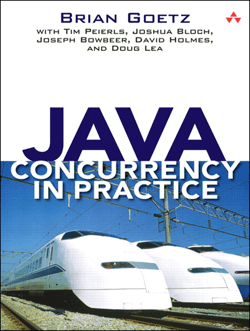After a few recent posts about immutability, including Objects Should Be Immutable and How an Immutable Object Can Have State and Behavior?, I was surprised by the number of comments saying that I badly misunderstood the idea. Most of those comments stated that an immutable object must always behave the same way—that is what immutability is about. What kind of immutability is it, if a method returns different results each time we call it? This is not how well-known immutable classes behave. Take, for example, String, BigInteger, Locale, URI, URL, Inet4Address, UUID, or wrapper classes for primitives, like Double and Integer. Other comments argued against the very definition of an immutable object as a representative of a mutable real-world entity. How could an immutable object represent a mutable entity? Huh?
I’m very surprised. This post is going to clarify the definition of an immutable object. First, here is a quick answer. How can an immutable object represent a mutable entity? Look at an immutable class, File, and its methods, for example length() and delete(). The class is immutable, according to Oracle documentation, and its methods may return different values each time we call them. An object of class File, being perfectly immutable, represents a mutable real-world entity, a file on disk.
In this post, I said that “an object is immutable if its state can’t be modified after it is created.” This definition is not mine; it’s taken from Java Concurrency in Practice by Goetz et al., Section 3.4 (by the way, I highly recommend you read it). Now look at this class (I’m using jcabi-http to read and write over HTTP):
@Immutable
class Page {
private final URI uri;
Page(URI addr) {
this.uri = addr;
}
public String load() {
return new JdkRequest(this.uri)
.fetch().body();
}
public void save(String content) {
new JdkRequest(this.uri)
.method("PUT")
.body().set(content).back()
.fetch();
}
}
What is the “state” in this class? That’s right, this.uri is the state. It uniquely identifies every object of this class, and it is not modifiable. Thus, the class makes only immutable objects. And each object represents a mutable entity of the real world, a web page with a URI.
There is no contradiction in this situation. The class is perfectly immutable, while the web page it represents is mutable.
Why do most programmers I have talked to believe that if an underlying entity is mutable, an object is mutable too? I think the answer is simple—they think that objects are data structures with methods. That’s why, from this point of view, an immutable object is a data structure that never changes.
This is where the fallacy is coming from—an object is not a data structure. It is a living organism representing a real-world entity inside the object’s living environment (a computer program). It does encapsulate some data, which helps to locate the entity in the real world. The encapsulated data is the coordinates of the entity being represented. In the case of String or URL, the coordinates are the same as the entity itself, but this is just an isolated incident, not a generic rule.
An immutable object is not a data structure that doesn’t change, even though String, BigInteger, and URL look like one. An object is immutable if and only if it doesn’t change the coordinates of the real-world entity it represents. In the Page class above, this means that an object of the class, once instantiated, will never change this.uri. It will always point to the same web page, no matter what.
And the object doesn’t guarantee anything about the behavior of that web page. The page is a dynamic creature of a real world, living its own life. Our object can’t promise anything about the page. The only thing it promises is that it will always stay loyal to that page—it will never forget or change its coordinates.
Conceptually speaking, immutability means loyalty, that’s all.

